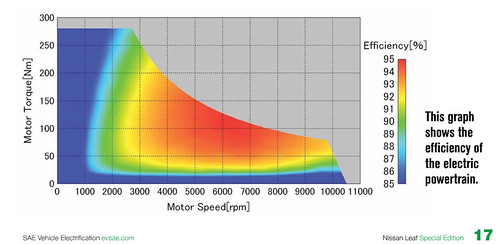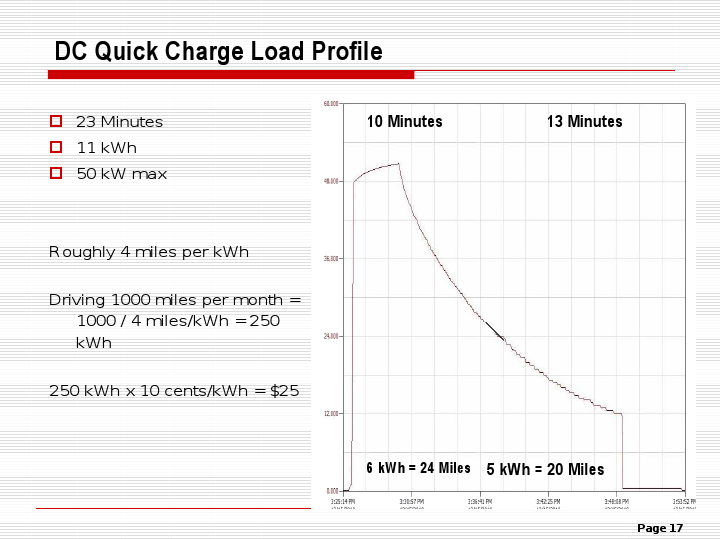abasile said:
you have to subtract aerodynamic and friction losses before arriving at a figure for the amount of kinetic energy available to be captured via regen. If you do this, then it is not unreasonable to expect 80% efficiency. Coming down 5000' from my home in the San Bernardino Mountains, I think I am getting close to this, but it is hard to get a precise number without fine-grained SOC information.
Since I completed my SOC meter last week, I have done one quick regen test up and down a steep street here in Claremont. For those who know Claremont, it was the North end of Mountain Ave. Google Earth shows an altitude rise of 508' over distance of 4175' = 12% grade. I was in ECO mode with no A/C.
I set the SOC meter to display what I call "clicks" (the integer units the SOC meter converts to % by doing a division), since these are the finest-grain measurement units available. Going up I expended 12 clicks (what I call the units the SOC meter converts to %) driving up, and 5 clicks of regen returned coming back down. I was never going over 30 mph, so aerodynamic losses were low. <<Edited - added new data below>>
To measure the loss due to motion, I did a separate test on near-level ground at similar slow speed, on a circular route so that gravity effects would average-out. After two complete trips around the course, I had lost 7 clicks over 2.2 miles;
2.2/7 =
.31 miles/click motion loss
BTW I use a tire pressure of 39 lbs/in^2.
Applying this result to the regen test course,
(4175'*2/5280 = 1.58mi)/(.31miles/click) = 5.1 clicks loss due to motion (rolling + aero).
Energy available for regen recovery: 12 clicks - 5 = 7 clicks.
Regen efficiency = (5 clicks/7 clicks) =
~73% +- ~7%.
I was hoping for higher efficiency, but this course was a little too short for an accurate calculation.
<<End Edit>>>
Because I had to apply light brake pressure most of the time on this steep grade, I probably lost some energy to friction braking. If I can find a steady grade not quite so steep, with a higher safe speed, where I don't need to apply any brake pressure, I can hopefully get a higher regen efficiency reading.
Whenever I have my foot on the brake, even lightly, I worry that some friction braking may be engaged. I am not sure how to “feel” whether there is friction braking, at least at low brake pressures. At higher pressures I am sure friction is engaged.
Assuming one has plenty of spare battery capacity, so that all double circles show, I have found two tricks for maximizing my regen. One is to keep the speed up, at least 20 mph. The other is to apply a brief strong braking pulse. This will often help kick the regen into 4 or 5 circles. Of course this also briefly engages friction braking, but often most of the higher regen level will remain after I have removed most or all brake pressure. Have others observed this ?





